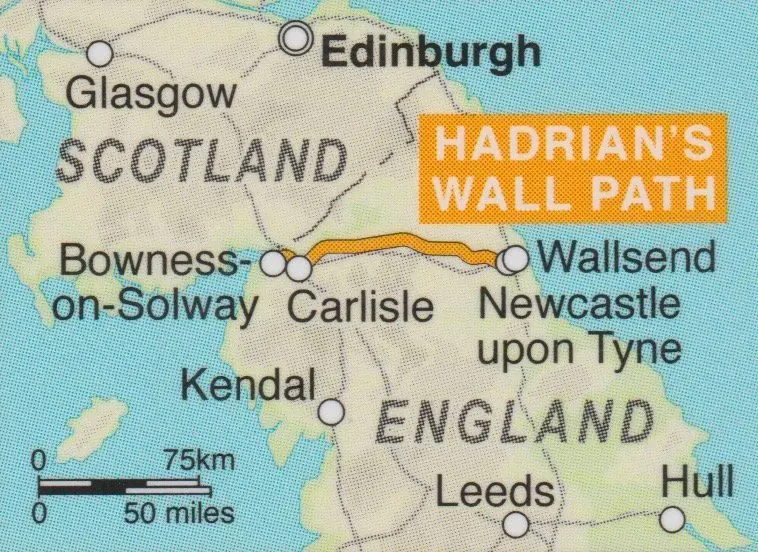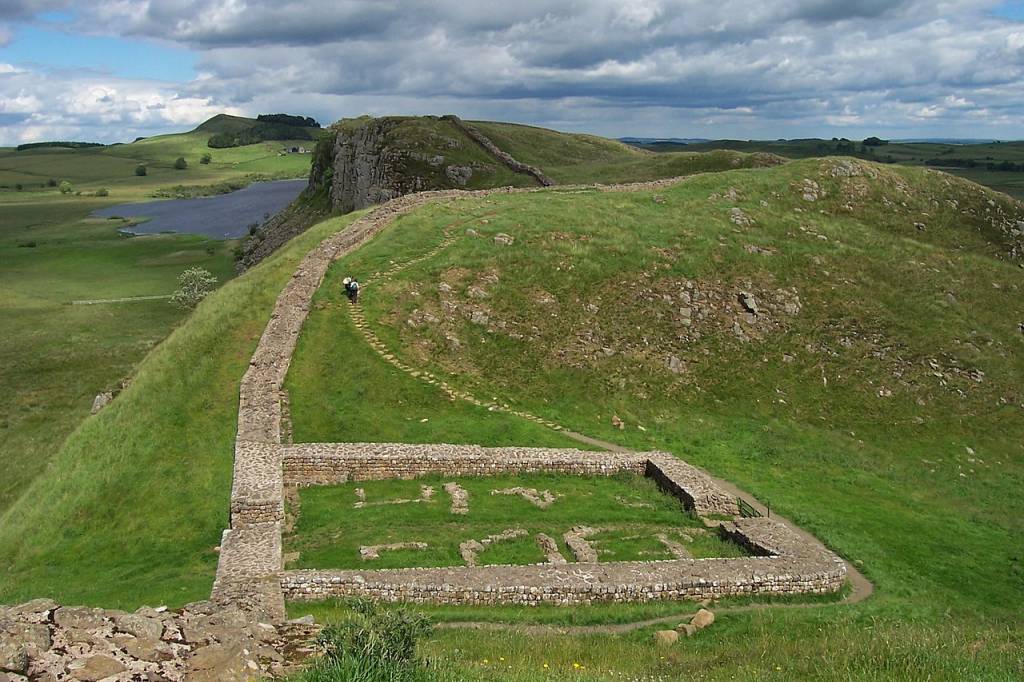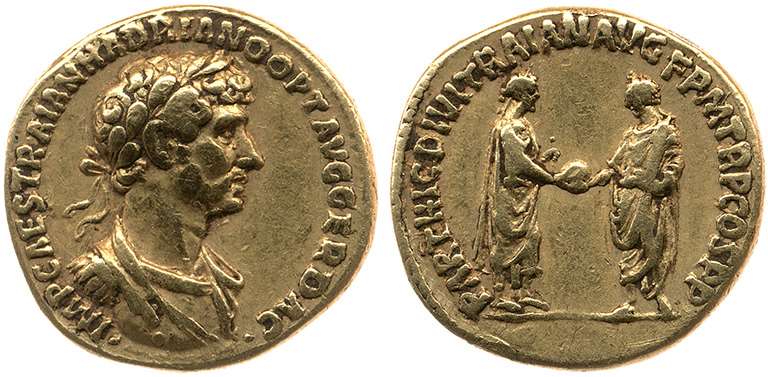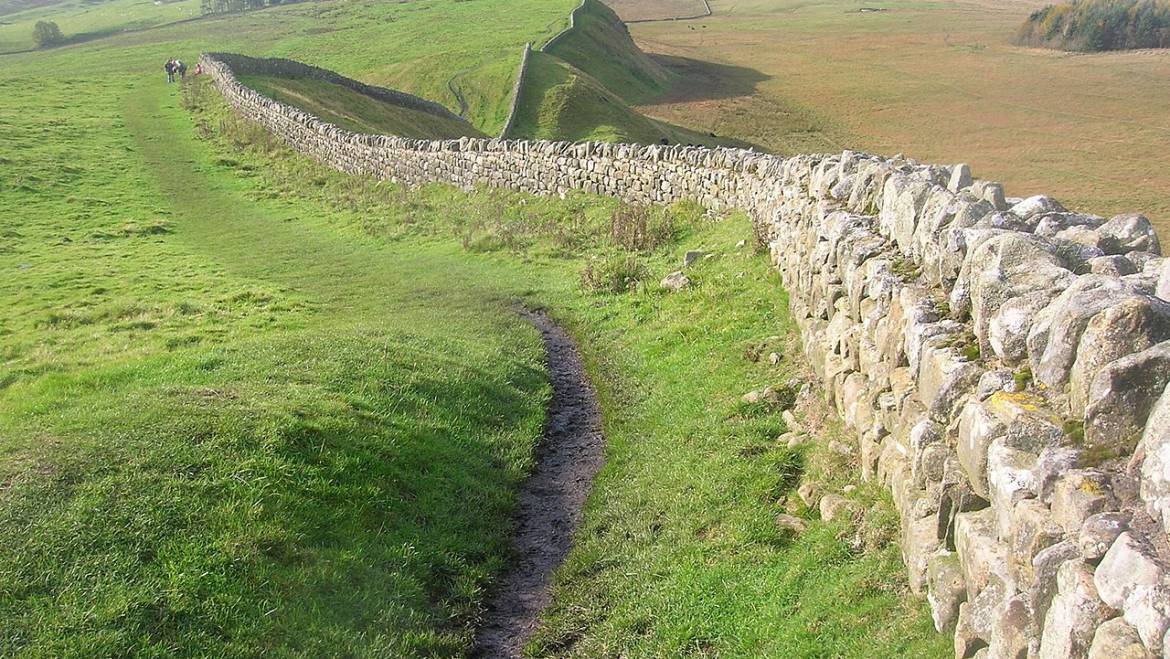My final semester as a college student took place at Stephen F. Austin State University. I had gone to Nacogdoches in the hot summer of 1975 to escape the clutches of an overzealous female. I enrolled at the university that fall and took courses pertaining to music appreciation, Texas history, American history, European history and world history. Dr. Archie McDonald made Texas history come alive far better than any of the professors I had labored under at UT the previous 3 1/2 years. I also remember the woman who headed the European history class, if only because she always called me “Charles.” At any rate, it was in her class that she asked me—or perhaps I volunteered—to write a paper about Hadrian’s Wall.
Nearly 49 years have passed since that little academic exercise, and much has been forgotten. I would dearly love to have a copy of what I wrote, to check both the content and style. Were I to read it now, I would probably smile a little and cringe a lot. I can only guess how I went about researching and writing this paper. I must have walked to the Ralph W. Steen Library (even now, the main library on campus) and found an encyclopedia or some other book that contained information on Hadrian’s Wall. Did I write it in the library or in my upstairs room at 200 Wettermark Street a block from SFASU? No idea. I must have scribbled an outline of sorts before composing the paper. I had no typewriter, although some of those now-obsolete machines were unquestionably available at the library. I assume I turned in a two-page handwritten paper about this famous 73-mile defensive fortification running east-west between the North Sea and the Irish Sea. And I surely indicated that the author’s first name was Richard and not Charles.
We are now living in a time when accessing information—whether to satisfy our curiosity or to compose a document for local or global publication—is far easier than in the mid-1970s. Nobody had heard of or conceived of the Internet back then, or Wikipedia or the other technological advances we now take for granted. Students enjoyed more face-to-face contact if only because they had no smartphones.
With no further ado, I will give an overview of the history of Hadrian’s Wall. Roman Britain began in 43 A.D. and ended in 410 A.D., at which time the Italian colonizers left. Worn down by the never-ending attacks of barbarian tribes such as the Picts, Visigoths and Vandals, the Emperor Honorius told the Brits, “You must now look after your own defenses.” Incursions from the north were the motivating reason for the Wall’s erection.
Hadrian, who ruled from 117 to 138, has been regarded by some historians as a “good emperor” and by others as a “bad emperor.” Had he not instigated construction of the Wall, I dare say he would be a “forgotten emperor.” He believed that the sprawling empire’s disparate peoples could best be unified by stable and defensible borders. That was true in the entire Mediterranean basin, Asia Minor, continental Europe and its most distant outpost—Britannia. Although such a wall had been under consideration before Hadrian’s reign, it was he who made the concept a reality.
Hadrian visited Britain in 122 and “corrected many abuses,” according to the Historia Augusta which was written about two centuries later. While there, he ordered construction of the wall that would bear his name. Work began at Wallsend on the River Tyne in the east and was completed six years later at Bowness on the south side of the Solway Firth in the west. Labor was provided by an estimated 15,000 soldiers from three Roman legions along with members of the Roman fleet. (As far as I know, natives were neither invited nor compelled to take part.) They were not just military men since some were trained as surveyors, engineers, masons and carpenters. The Wall was 12 feet high and 10 feet wide at the beginning of the project, but it seems to have gotten somewhat smaller the further west they went. It was mostly made of stone, although turf and timber were used in some places. Watchtowers every 1/3 of a mile were manned by Roman troops.
A formidable obstacle against intruders from Caledonia (Scotland), Hadrian’s Wall was as much a statement of imperial power as a military barrier. In fact, the northern tribes were never fully conquered and found ways to get over or through it—whether for trading or raiding.
Long before the Romans retreated from the island, they had abandoned the Wall. As the centuries went by, it was cannibalized, its materials used for housing and the construction of roads. Much of it has disappeared, and it might all be gone if not for a 19th century antiquarian named John Clayton. Recognizing the historical significance of Hadrian’s Wall, he bought numerous farms along its route and even did some excavation. Clayton got the National Trust involved in preserving what remained of the Wall; much of it has since been rebuilt. Declared a World Heritage site by UNESCO in 1987, it is one of the UK’s major ancient tourist attractions and is visited by more than 100,000 people every year.

A bust of Emperor Hadrian…

Map of northern England showing the location of Hadrian’s Wall…

People traversing Hadrian’s Wall…

Two sides of a coin featuring the likeness of Hadrian…


2 Comments
If only Robert Frost had written “Mending Wall” prior to Hadrian’s reign, he would have known that a “wall makes a good neighbor”….instead of an enemy…
Could it be possible that Hadrian get the idea of building a long defensive wall from a earlier oriental precedent, Great Wall of China?
Add Comment